The Gap
Reasons for dropping out of school have been identified by years of observation and field work. These include late admission, irregular attendance, unfamiliarity with the language of instruction, lack of role models and parental motivation, shy and timid nature, high demand for labour of workers of any age, the need to care for younger siblings and livestock, poor health, dysfunctional families, (often coupled with alcohol abuse), etc. The influence of these factors is vastly enhanced by poor access from isolated villages , heavy monsoon rains, conflict with wildlife etc. Where there are schools in isolated areas, poor teacher attendance is a common problem. The government Tribal residential schools have a poor record of meeting the need.

